James Gandon 1742-1823
| Gandon was born in 1742 in London into a family of Huguenot descent. He attended Shipley's Drawing Academy where he acquired, he writes, “a theoretic knowledge of architecture”. Following two years there, he became apprenticed to William Chambers in 1758. | 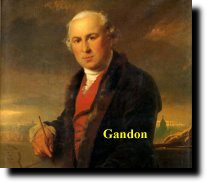 |
|
Chambers
|
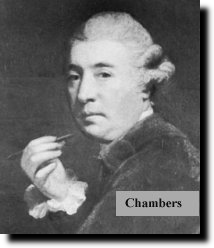 |
| Gandon in England In 1765, Gandon left Chambers to begin practice on his own. His first commission was to design a memorial to the composer Handel on the Wolverhampton estate of Sir Samuel Hillier. His practice grew but remained small; however, his reputation was increased by winning the first gold medal for architecture to be offered by the Royal Academy in 1769. 1767 and 1771 Gandon contributed two chapters to Britannicus, a book illustrating the outstanding private and public buildings of the day. late 1768, Gandon entered a competition to design the new Royal Exchange in Dublin. Although the competition was won by Thomas Cooley, Gandon's design was selected as second, and so he came to the notice of important men in Ireland such as Lord Charlemont, Lord Beresford and Lord Carlow (the future Earl of Portarlington) who were hoping to redesign Dublin. |
 |
|
Gandon in Ireland |
|
| In December 1781 Gandon was invited to spend Christmas at Dawson's Court with Lord Carlow and his family. Lord Carlow was keenly interested in architecture and the arts, and had decided to improve his estate near Portarlington, beginning with the building of a church at Coolbanagher nearby. The previous thatched-roof church had been burned down. Work started in 1782, and the church was consecrated in 1785. At some time Gandon also designed the mausoleum for Lord Carlow beside the church. (For more details, see Gandon and His Times, Hugo Duffy, Gandon Editions, 1999, pp 146 - 152) | 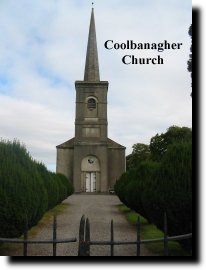 |
|
Busy period for Gandon |
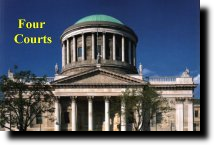 |
|
The start of the 1800s was a very turbulent period in Irish history, and Gandon eventually became worried by his association with unpopular men such as Lord Beresford who had put down rebellion very cruelly. His success in gaining commissions had brought him enemies, and he had been attacked and insulted publicly by those who held a grudge against him. He left briefly for London, but returned to Dublin in 1805 to begin his lengthy retirement. He died on Christmas Eve 1823, aged 81. He is buried in Drumcondra churchyard. |
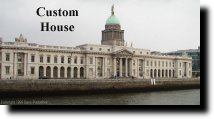 |